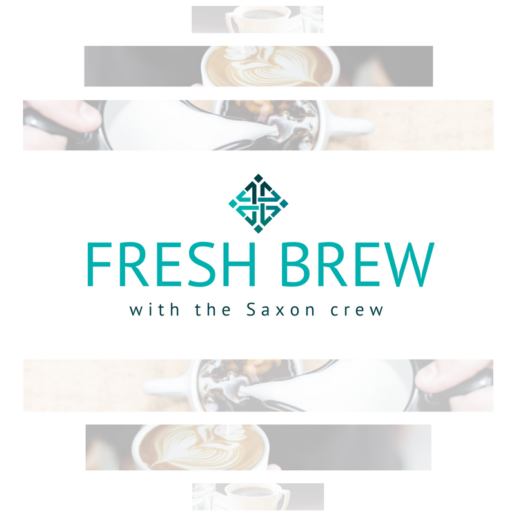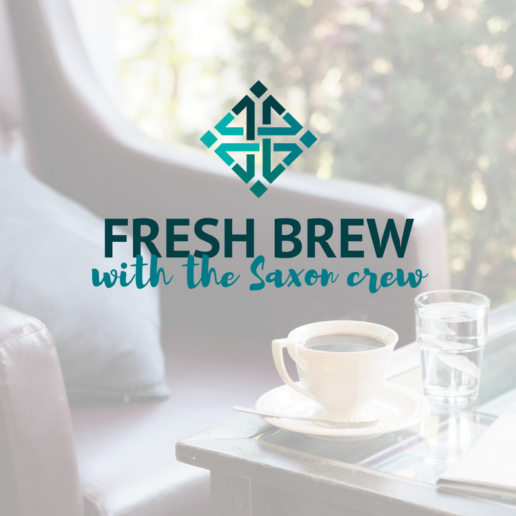Even HR executives have to reinvent themselves to survive
New trends, technology, and modern changes are creating concerns for the trained level of HR professionals. With different changes continuously entering companies, HR professionals are having to go through different pieces of training. Read this blog post to learn about HR professionals having to learn about new and modernized paces.
HR chief executives by and large are ill-equipped to meet the needs of the modern workplace, according to a new report of 500 top executives.
The irony is the HR profession is perhaps entering a golden age for HR leaders, as the role shifts beyond administrative and process-related functions to work that is at the very core of a company’s business strategy to keep top talent.
And yet because the workplace is changing so fast to adapt to technological and demographic shifts, the study by SHRM and another insurance company found that the role of HR hasn’t been able to keep pace to train the latest generation of HR leaders.
Because work functions are constantly in flux, training and development can no longer be considered episodic events but instead will require perpetual reskilling to stay relevant. The study noted that between 2003 and 2013, more than 70% of the Fortune 1000 companies changed and were replaced by nimbler firms.
Most HR executives or chief people officers, or CPOs, will need to reskill to stay relevant — and do so quickly, according to HR People + Strategy, the group’s network of business and thought leaders in human resources.
“As the pace of innovation and technology in the workplace accelerates, CPOs will need to reinvent themselves,” says the study’s co-author Suzanne McAndrew, the global head of talent of another insurance company. “With disruption on the horizon, organizations will require strong, visionary people leaders who can think through the people and talent strategy, and work with management on the business strategy.”
Most executives “are not prepared,” McAndrew says.
“We’re only going to get things done if we have the right people, the right talent in the right functions with the right goals,” Upwork CEO Stephanie Kasriel says in the study. “That to me is the role of HR, to ensure that we have the right people strategy in order to inform the business strategy.”
The study reviewed key changes shaping HR functions for human resources leaders and also found:
•Virtually all respondents (99%) believe HR executives must have the agility and courage to change, yet only 35% said today’s leaders are prepared to respond.
•More than nine in 10 respondents (94%) say it’s important to explore the development of future HR leaders, but only about a third (35%) agree that future staff are receiving the training they’ll need to succeed.
•Only one-third of respondents (36%) are prepared to think about how technology can be used to execute work in the future; only a quarter (26%) say they have the technical acumen to evaluate new technologies.
HR leaders can do five things to help drive change, including acting as an advocate for change and agility, developing digital technology to improve HR functions, using automation to foster new skills and reinvention for staff, focusing on workplace culture and leadership and elevating HR decision-making to include more analytics, the study found.
Alexander Alonso, chief knowledge officer at SHRM, noted that HR executives have the greatest potential to foster the evolution of enterprises by building up their own expertise to meet future workforce demands.
Respondents also recognize much progress is still needed with digital enablement and understanding how to apply digital technology and automation in the workplace. Only 42% had a favorable opinion of their organization’s progress when it comes to embracing technology that builds a consumer experience for employees.
“While CPOs don’t need to be technology experts, they must understand how changing technology can impact work and the workforce,” says Ravin Jesuthasan, a managing director at another insurance company and co-author of the study.
SOURCE: Siew, W. (08 January 2020) "Even HR executives have to reinvent themselves to survive" (Web Blog Post). Retrieved from https://www.employeebenefitadviser.com/news/even-hr-executives-have-to-reinvent-themselves-to-survive
The Post-Holiday Funk Is Real
Getting out of the post-holiday funk is a difficult task in itself. After a holiday season filled with parties, breaks, food and time off, it can be hard to snap back into work mode. Here are a few things you can do to get out of that holiday funk:
Somewhere around the third week in December work in many offices starts to slow down. There are holiday parties. Customers and clients may be harder to reach. Energy and motivation wanes. And many of us sign off from work completely to spend the holidays with friends and family.
And then January arrives, and it’s time to get back in the swing of things. But, after being out for a week or two, it can be hard to snap back into work mode. If you’re feeling sluggish and unmotivated, you’re not alone. There are several reasons for this kind of the post-holiday funk — and, fortunately, there are things you can do to get out of it as well.
Focus forward
It’s common around New Year’s Day to look back at the past year. Research on construal-level theory suggests that the more distant you are from anything in time, space, or socially, the more abstractly you think about it. Getting out of the office and looking at the whole year leads you to think about your contribution and not just the tasks you did. This is natural and healthy. After all, your contribution in the last year was not the 16,471 emails you sent, but rather the relationships you solidified, the projects you oversaw, and the collaborations you continued as a result of those emails.
But while you’re likely to be proud of some things you accomplished, you may also be thinking about some of your failures. These are often the source of many people’s New Year’s resolutions.
Of course, noticing last year’s failures can be disheartening. And around the new year, you may end up in a cycle of thoughts about what you could have done differently in the past. This kind of rumination can actually heighten feelings of depression and anxiety, which sap your motivation.
When you get back to work, it’s important to start looking forward to the new year rather than back on the past one. Treat the goals you want to accomplish as new challenges and a source of energy not a penance for things you didn’t get done last year. Focusing on the future — and seeing new opportunities to succeed — can help you to generate the energy to get started.
Get specific
Your reflections on the past year might also lead you to commit to making changes. This is a good thing but not if your commitments are abstract, like “be more productive,” “get a new job,” or “become a better leader.”
In fact, these abstract goals can be paralyzing. They’re simply too big to make meaningful progress toward. Instead, turn your goal into specific actions that when added up lead to the desired outcome. This kind of specific plan is called an implementation intention. It requires that you break the general goal down into tasks that can be put on your calendar.
This specificity has two benefits.
First, it requires you to think through what actually has to be done to achieve the goal. You may discover that you don’t know all the steps or that some of the steps are ones that involve skills you need to learn. In that case, you might want to find a mentor or coach who can help you.
Second, being specific forces you to grapple with your densely packed schedule. One reason why people often fail to achieve important goals is that they cannot find the time to perform the tasks that would lead to success. When you try to add new actions to your agenda, you are forced to figure out what can be moved, delayed, or delegated in order to put you on the road to following through on your commitment.
Make the right social comparisons
A third possible source of post-holiday funk is social comparison.
Humans don’t evaluate things on an absolute scale. Instead, we assess our success relative to some standard. Often, we do that through the process of social comparison, in which we compare ourselves to someone else.
There are two kinds of social comparisons. Upward social comparisons involve comparing yourself to someone better off than you are along a particular dimension. For example, you might see a high-school friend who just got a promotion, or a college friend who just bought a car that you dream of owning some day. These comparisons tend to make you feel bad about yourself, because they highlight what other people have that you don’t, whether it’s money, social standing, or particular relationships. Downward social comparisons are comparisons to someone worse off than you. These comparisons generally make you feel good about yourself and your situation.
Unfortunately, both kinds of comparison can sap your motivation. Upward social comparisons can frustrate you, knowing that other people you know are more successful, happier, or wealthier than you are. Because of the way people curate their social media, if you just look at where people are taking vacations or what they post about their jobs, it’s easy to believe that most people are doing better than you are, which may lead you to feel like giving up.
When you make downward social comparisons, you feel better about what you have and what you have accomplished, but you aren’t motivated to continue pushing forward. Instead, it makes you satisfied with where you are and, often, complacent. The energy you need to motivate yourself comes from being dissatisfied with something about the present, along with developing a plan to get what you want.
You can’t stop yourself from making social comparisons, but you can explicitly manage those comparisons to motivate you. For example, you can find a close rival — someone who is doing slightly better than you are along some dimension, but whose performance is close enough to your own that you can see how you could take some actions to reach their level.
You can also make social comparisons to your past self. Take a look at your trajectory. Recognize that even if you haven’t achieved all of your goals, you have improved over time. Use that recognition of your own growth to spur you to keep working to reach new heights.
No one wants to start the year off in a rut. And yet many of us begin January too focused on the past and feeling bad about what we have yet to accomplish. With some small changes in your perspective, though, you can hit the ground running in the new year.
SOURCE: Markman, A. (03 January 2020) "The Post-Holiday Funk Is Real" (Web Blog Post). Retrieved from https://hbr.org/2020/01/the-post-holiday-funk-is-real?ab=hero-subleft-3
Top 4 HR trends to watch this year
How can HR professionals better engage employees, improve an organization's brand, and maximize productivity and profitability? Their success will rely on HR departments staying nimble and leveraging technological advances to help reshape workplace practices. Here are four HR trends to watch this year:
HR professionals can no longer rest on their laurels. They are now looking to implement innovative strategies to better engage employees, improve the company’s brand both internally and externally, maximize productivity and increase the organization’s profitability.
So how can HR professionals go about making this happen? The success of HR will largely be based on staying nimble, evolving their organization’s policies and leveraging technological advances to ultimately reshape their workplace practices.
With that in mind, here are the top HR trends that will take center stage:
The gig economy and the importance of flexibility. The gig economy, which is comprised of individuals with short-term or temporary engagements with a company, is substantially important to employers. Here, workers are seeking increased flexibility and control over their work environments. Since many questions remain unanswered regarding worker classification issues and the application of existing laws in the gig economy, look for the Department of Labor to issue an opinion letter or guidance in 2019 detailing how a company may compliantly work within the gig economy and not run afoul of existing independent contractors.
Flexibility also is important for all employees — not just for the gig economy. While telecommuting and remote positions are not new, they are being emphasized again to better engage employees and increase retention metrics.
The tech effect on future of HR. The strategic and consistent use of workforce data analytics to predict and improve a company’s performance has exploded over the last several years, with additional momentum expected in 2019. While most HR professionals rely on metrics for basic recruiting and turnover rates, more in-depth analytics and trend spotting has become the norm.
Once trends are identified in, for example, turnover rates, an HR professional should have the tools to dive into the data and analyze root causes, such as the need for manager training, review of compensation strategies or a change in the company’s culture. Using predictive analytics in the HR space is helping companies make better informed, dynamic and wiser decisions based on historical data, as well as placing HR on the level of other data-driven company departments, such as finance and marketing.
The collection of this enormous amount of data also poses challenges and potential risks to companies, including negative perceptions among employees about how their data is being used, employee privacy laws and potential security breaches. Strong and comprehensive security policies, protocols and controls are necessary to ensure employers are keeping their employees’ data safe. In 2019, a steady flow of communications to employees regarding advanced security and usage policies is key to prevent data misuse or misunderstanding regarding how information is collected and used.
Artificial intelligence also will continue to be a significant focus driving improvement in the HR arena. Determining which data to collect, analyze and protect will provide opportunities for AI to assume a larger role in HR. Also, in some large organizations, AI already is being used for more than just automating repetitive HR tasks, such as onboarding new employees. The future of AI for most companies will include creating more personalized employee experiences as well as supporting critical decisions. From analyzing performance data to eliminating biases when screening candidates, AI will continue to be a pivotal HR tool.
Strategies for successful recruitment. Running an effective talent pipeline should be the objective of all hiring endeavors. Pipelining is consistently gaining traction as a recruitment tool for new employees. The concept employs marketing concepts to ensure that companies have a diverse group of strong recruits waiting to be hired. Pipelining reduces time to hire and leads to better quality candidates.
Health, wellness and adequate employee training. Another area of importance is multi-faceted wellness programs, which focus on an employee’s total well-being, from nutrition to financial wellness. These programs often include a comprehensive employee assistance program, training and activities during worktime. The training can focus on anything from physical health to development of employees’ knowledge base and technology-focused education. A greater emphasis also is being placed on workplace communication coaching, such as collaboration and negotiation, which are critical to success in the workplace.
Continued training and heightened prevention of sexual harassment and discrimination will be another trend this year. Organizations big and small must ensure that compliant policies are in place and employees are trained on the policies. Several states including California, New York, Connecticut and Maine already mandate that private employers must provide harassment training to workers, and the number of states requiring this training is expected to increase in the coming years.
SOURCE: Seltzer, M. (03 January 2020) "Top 4 HR trends to watch this year" (Web Blog Post). Retrieved from https://www.benefitnews.com/opinion/top-4-hr-trends-to-watch-this-year
Are You Pushing Yourself Too Hard at Work?
Different seasons can bring in long hours, extensive work, and multiple deadlines that require a lot of attention. Are you pushing yourself too hard? It is important to know the difference between a temporary work crunch and an everyday "norm". Read this blog post for a few key signs of pushing too hard at work.
We all have intense periods at work where multiple deadlines converge, an important deal is closing, or a busy season lasts for a few months. During these times, we may work more intensely or longer hours, but we know that the situation is temporary, and we are able to keep work in perspective. Conversely, approximately 10% of Americans are considered workaholics, defined as having a “stable tendency to compulsively and excessively work.” Whether you are in the midst of a temporary work crunch, or if working all the time is your version of “normal,” there are some key signs that you are pushing yourself too hard. These include:
You aren’t taking time off. Consistently putting off vacations (including working over major holidays), regularly working all weekend, or dismissing the idea of an occasional day off is a sign that you are burning the candle from both ends. While only 23% of Americans take their full vacation time allotted, studies of elite athletes show that rest periods are precisely what helps them to perform at full throttle when needed, and the same is true for the rest of us. While extended vacations are helpful, smaller breaks, such as taking the weekend to recharge, carving out personal time in the evening, or having an occasional day off can also be an important part of having sufficient downtime to restore your energy and counter the drain of being “always on.”
You deprioritize personal relationships. When we focus exclusively on work for extended periods, it often comes at the expense of our personal relationships. During 2018, 76% of US workers said that workplace stress affected their personal relationships, with workaholics being twice as likely to get divorced. Not taking time to connect with friends and family can also be detrimental to our health. Research shows that strong social relationships are positively correlated to lifespan and that a lack of social relationships has the same effect as smoking 15 cigarettes a day. If you are not taking time outside of work to connect socially with others and have become increasingly isolated, such that social invitations have dried up because others assume you are not available, chances are you are too focused on work.
You’re unable to be fully present outside of work. Another sign you are pushing yourself too hard is that when you do leave the office and take time to be with the people you care about, you are not able to mentally turn work off and be present with them. In 2017, 66% of Americans reported working while on vacation. Jeff, a former client of mine who is a senior partner at his law firm, has never gone on vacation without his laptop. In addition, after making a point to spend time on the weekends to connect with his daughter, he confessed to constantly thinking about work and admitted that he couldn’t help but compulsively check email on his phone every few minutes. While it’s normal to think about work periodically, it becomes a problem when we’re not able to manage our urge to give into work-related distractions, slowly eroding our most important relationships. In his book, Indistractable, author Nir Eyal points out that these distractions make the people we care about “residual beneficiaries” of our attention, meaning they get what is left over, which typically not very much.
You’re neglecting personal care. This is not the occasional skipping a shower when working from home in your sweatpants. Failing to get sufficient sleep, missing meals or existing on a diet of coffee and energy bars, or abandoning exercise or personal hygiene for extended periods are all indications that you are in an unhealthy pattern of behavior. In particular, when we sacrifice sleep for work, we are effectively working against ourselves, as sleep deprivation is shown to impair higher-level cognitive functions including judgment, critical thinking, decision making, and organization. Likewise, skipping exercise puts us at a further disadvantage. Exercise has been shown to lower stress, improve mood and energy levels, and enhance cognitive function, such as memory, concentration, learning, mental stamina, and creativity. As a former investment banker who worked 80- to 100-hour weeks during more intense periods, taking breaks to exercise, eat, and even nap in one of the sleeping rooms provided onsite was critical to maintaining my health, stamina, and productivity.
You see your value as a person completely defined by work. Failure to see a broader perspective, both in terms of how you see your value as a person as well as how you see the importance of work relative to the rest of your life, can be a sign that you are pushing yourself too hard. This myopia is usually driven by deeply held limiting beliefs that create a contracted worldview. Elisa, the head of engineering at a tech company, pushed herself and her team incredibly hard. Her behavior was driven by a belief that “My value is what I produce.” To broaden her perspective, she asked others she respected about what they valued about her, as well as how they valued themselves. She was able to see not only that people valued her for other things like being a good friend, parent, or thought partner, but also that they defined their own value more broadly than their work. Sometimes, it takes a big life event, like the birth of a child or the death of a colleague or loved one, to shake someone out of this restricted perspective. Another way to broaden your perspective in the absence of these events is to have interests outside of work, which can be a good reminder that work isn’t everything.
While we all need to shift into high gear from time to time, keeping work in perspective with the rest of our lives, and taking care of ourselves and our relationships are key to achieving long-term success, both personally and professionally.
SOURCE: Zucker, R. (03 January 2020) "Are You Pushing Yourself Too Hard at Work?" (Web Blog Post). Retrieved from https://hbr.org/2020/01/are-you-pushing-yourself-too-hard-at-work
New drug plan would curb exorbitant pharmaceutical costs
California Governor, Gavin Newsom has proposed a pharmaceutical plan to cut costs of pharmaceutical prescriptions. It was suggested that using low prices obtained by the state, could help other buyers. Read this blog to learn about how California Governor is purposing an attempt to lower costs for California residents.
California’s governor unveiled plans to establish a state-run generic-drug wholesaler, as part of a series of measures that together would constitute one of the furthest-reaching attempts to curb pharmaceutical costs in the U.S.
Gov. Gavin Newsom on Thursday also proposed creating a single market that would allow drug buyers to pool their bargaining power to drive down costs. And Newsom suggested using low prices obtained by the state’s Medicaid program to aid other buyers, among other steps.
The most populous U.S. state, California has a history of using its economic muscle to try to influence national policy on everything from auto emissions to health care. The drug-pricing proposals, which in some cases appear to require new law, are likely to be opposed by a pharmaceutical industry that has formidable economic and legal wherewithal of its own.
“These nation-leading reforms seek to put consumers back in the driver seat and lower health care costs for every Californian,” Newsom, a Democrat, said in a statement.
The plans, released as part of the state’s proposed 2020-2021 budget, are almost certain to face substantial practical, political and legal hurdles. For example, the proposal to create a state-run drug label would rely on drug companies to supply inventory on a contract basis.
Companies could balk at that notion if it stands to further compress their margins. Major generic manufacturers, including Mylan NV and Teva Pharmaceutical Industries, have struggled to turn a profit on some widely used medications. For higher-cost generic drugs, there can be few competing manufacturers with the licenses to produce the pills for the U.S. market.
Creating a single buying pool could run into difficulties, as well. Newsom’s proposal says state programs, health insurers and private employers would band together as a sole buyer, and that drugmakers would have to offer their products at one price to the entire market.
But that could limit patient access to medications if pricing disputes lead drug companies to withhold their products. In Europe, negotiations between drugmakers and government health programs have resulted in some expensive drugs not being available, one of the trade-offs for the continent’s typically lower costs. It’s unclear if California could successfully hold together a large pool of independent buyers in the face of pressure from patients unable to access treatments.
SOURCE: Bloomberg News (09 January 2020) "New drug plan would curb exorbitant pharmaceutical costs" (Web Blog Post). Retrieved from benefitnews.com/articles/new-c-a-drug-plan-would-curb-exorbitant-pharmaceutical-costs
Implementing AI Technology for HR
Artificial intelligence (AI) has taken the tasks of collecting, copying, entering and checking data off of HR professional's hands. With advancements in technology, AI has become a way to open a variety of opportunities to influence a company's workflow. Read this blog post to learn about artificial intelligence and how it's developing HR managers and leaders.
When HR managers embark on implementing artificial intelligence (AI) into their company's workflow, they'll be grappling with a disruptive technology that changes the way people from HR leaders to recruiters to front-line employees work.
That may be why PwC's latest Human Resource Technology Survey of 599 HR and information technology (IT) leaders worldwide shows that those leaders are cautious about leveraging the technology to drive HR functions.
In fact, 63 percent of those surveyed have not yet implemented artificial intelligence for HR, and many cite various reasons that influenced their decision not to do so, including:
•Cost of implementation.
•Complexity of integration into the existing IT infrastructure.
•Lack of skilled staff.
•Lack of compelling use cases that can be tied to business outcomes.
But while they are hesitant to jump into using AI, 42 percent of respondents said they plan to implement AI for HR over the next one to three years. The technology opens significant possibilities.
"Human resource executives want their teams to focus on meaningful tasks, such as interpreting data, decision-making, storytelling and strategies that enrich the worker experience, which is what AI solutions can offer. Without AI, HR professionals are relegated to collecting, copying, entering, re-entering and checking data," said Mike Brennan, president of Leapgen, a Manhattan Beach, Calif.-based HR consulting firm.
HR leaders will have to find the right tools, team with the right partners, and find the best opportunities to apply AI to HR functions without causing employee anxiety.
Schneider Electric's Story
Andrew Saidy, vice president of talent digitization, talent acquisition and mobility at Schneider Electric, a multinational company based in Paris, oversaw the implementation of an AI-driven platform that revolutionized the talent mobility and career development processes at his company.
Three important factors pushed Schneider Electric, which employs approximately 144,000 employees across 100 countries, to make the change. First, more than half of Schneider's employees are Millennials, a generational group whose members change jobs more frequently than workers in other age groups. According to the U.S. Bureau of Labor Statistics, the average job tenure of Millennials is 2.8 years.
Second, 47 percent of Schneider employees surveyed in exit interviews said they were leaving because they couldn't find their next opportunity within the organization.
Third, the process of matching employees to job opportunities within the company was laborious, cumbersome and lengthy.
"Recruiters were spending weeks waiting for responses, making phone calls, sifting through CVs and selecting which candidates would be chosen for interviews," Saidy said.
With a clearly defined use case for its AI strategy, the company chose to develop a cloud-based, AI-driven talent market. The HR team had to decide whether to build or buy a solution.
"This is an idea we toyed with at the start because we are a technology company, we are a digital company, and we are leaders in digital energy management," Saidy said. "We have a strong team of enterprise IT developers, and we could have had the ability to build a talent platform internally as opposed to buying something outside of the market."
What surprised Schneider's HR team was that there are many vendors offering AI solutions for HR tasks, but having so many AI solution providers to choose from presents other issues.
"You have to be careful when you select a company for your AI project," he said. The vendors "need to be financially stable" and need to have "a clear product road map and customers with proven success. You can't just go for whoever is claiming to provide a solution."
After a three-month search, which included testing vendors' algorithms, Schneider's HR and digital teams decided to buy an internal talent product from Gloat, an Israeli technology company. The platform, called Open Talent Market, leverages AI to match employee resumes with open positions, including long-term jobs and short-term projects.
Part of the software evaluation involved letting employees register on the site and upload their education and experience to get a sense of whether they thought the tool was intuitive, easy to use and engaging. Schneider used a Net Promoter Score to assess employees' experience and enthusiasm for the tool.
The company monitored the number of employee registrations, short-term and long-term jobs that appeared on the site, and successful matches of qualified employees to job posts.
Schneider's HR team also tested the algorithm's ability to adequately address bias and evaluated its security features. Schneider chose software that doesn't require candidates to enter information related to gender or race, or place or date of birth.
Keeping in mind the difficulties Amazon experienced when it built an AI-driven recruiting system that perpetuated gender bias, Schneider is mindful that many of its jobs such as engineer, field technician or electrical engineer have typically been filled by male candidates, Saidy said.
Schneider's technical team also carefully considered the software's security capabilities, measures to protect from data breaches and secure integrations. This was particularly important when considering that Open Talent Market is connected to the company's applicant tracking system, learning management system and human resource information system, as well as LinkedIn.
Recruiter Adjustment
Since its launch in September 2018, Open Talent Market has put Schneider's managers in the driver's seat and has changed the role of some of the company's 200 recruiters—an adjustment that hasn't always been smooth, Saidy said.
"Initially, some recruiters had reservations on the Open Talent Market because of the way it changed their jobs [by giving more control to hiring managers] and took away from recruiters the tasks of sourcing and shortlisting internal candidates, now done by the platform."
Making sure recruiters continue to be motivated, engaged and enthusiastic about their job as their tasks change was a key consideration, Saidy said.
"To address this, we focused on why we put the Open Talent Market in place, what is in it for the recruiters, and how they reinvest their time consulting and supporting managers as well as employees' internal mobility. Keeping the lines of communication open with the teams is an especially important pillar of a successful change adoption."
SOURCE: Lewis, N. (09 January 2020) "Implementing AI Technology for HR" (Web Blog Post). Retrieved from shrm.org/ResourcesAndTools/hr-topics/technology/Pages/Implementing-AI-Technology-HR.aspxA
Managing the Social Butterfly in Your Office
Enjoying the work environment is important, but too much play and not enough work can cause conflict, distraction, and dissatisfaction. Research from the platform Udemy discovered that most employees like to work without distractions from their peers. Read this blog to learn how to manage the social butterfly in your workplace.
Although they might pretend to enjoy playing foosball, catching up on TV shows, and socializing in the office, most employees would prefer to just do their work without distractions, and keep their private lives private, according to new research from online learning platform Udemy. And it’s not just the “older” folks at the office. Udemy’s findings show that this wish is consistent among baby boomers, Gen X, millennials, and Gen Z alike.
So why aren’t more offices heads down and focused on work, if that’s what most of us want? The research shows that the more social minority tends to set the overall tone in the workplace. This difference in work style can cause interpersonal conflict, employee distraction, and dissatisfaction. While that might not sound like a big deal, unhappy, actively disengaged workers cost U.S. companies up to $550 billion per year.
Why we have trouble setting boundaries
Business leaders today are struggling to set boundaries for “appropriate” workplace behavior. Behavior that has traditionally been viewed as unprofessional — such as hugging, sharing deeply personal information, and using profanity — has become much more common.
Part of the problem is that managers often wrongly assume employees “just know” how to interact with each other at work. They don’t. This is partially due to changing employment trends, such as a decrease in entry-level positions, and fewer teens working summer jobs, which has resulted in less familiarity with workplace norms. Also, that old scapegoat, social media — and business messaging apps that mimic social media — may contribute to a perception that more informal communication styles are also OK at work. (Just do an internet search for “Slack etiquette”; the abundance of articles about how to communicate professionally indicate that this is a common challenge.)
Another factor contributing to why we have trouble with boundaries is a lack of self-awareness; that is, understanding how we come across to others. In fact, research shows that although 95% of people think they’re self-aware, only 10-15% actually are. When we’re not self-aware, we don’t realize that what we do, such as hanging around someone’s cubicle to chat, or using profanity, bothers or distracts others.
Despite this confluence of factors, many managers aren’t proactive about putting guidelines in place to set expectations of how employees should interact in a professional way. When there’s no clearly communicated norm about what constitutes “professional behavior” in the workplace — even if those norms are culturally or company specific — it’s difficult to call out if someone has crossed it.
Best practices for managing behavior and minimizing distractions
Defining which social behaviors are “too social” or distracting at work is not an exact science, and the right balance will be different in every workplace. However, in general, the Udemy survey found two distinct groups — across generations — with opinions around which behaviors were appropriate for the workplace. “Social butterfly” personalities were more likely to rate social behaviors, such as hugging, casual communication style, and gossiping more appropriate for work. “Worker bee” personalities, on the other hand, rated these same behaviors as less appropriate.
So how can a manager help the social and less social (at least at the office) work better together? Here are five best practices managers can implement to support change and open communication about expectations for interaction — and fewer distractions — at work.
Emphasize positive intent when giving feedback. When feedback is about something personal, like work style, rather than specific to task and performance outcomes, it can cause feelings of social rejection. Because most of us shy away from causing emotional distress in others, giving this sort of feedback is hard. A lens of “positive intent” can help you more positively frame feedback, for example to an employee who is extremely chatty, if you assume they are just behaving in a way that is natural for them, feels “right” to them, and is not intentionally trying to bother others. You might say something like: “I would like to give you some feedback about your communication style at work. You stop by my desk several times a day to talk to me about non-work topics, and it’s hard for me to stay focused on my work when you do that. To be clear, I feel confident that you’re not trying to bother me intentionally, and that you want to be friendly and inclusive. Did I get that right?”
Own the awkward. One way to initiate a discussion with employees about behavior that causes distraction or distress is to simply admit feeling uncomfortable: “This feels uncomfortable, but I wanted to talk about something that’s been on my mind and may not be on your radar.” Since you’re about to make the other person feel vulnerable, it can be effective to be a bit vulnerable yourself; for example: “It might sound silly to say ‘don’t hug me,’ but hugging my colleagues makes me uncomfortable — and affects my ability to maintain professional boundaries.”
Be specific. It’s important to articulate specifically and neutrally what the other person is doing that is affecting you or another member of the team. “You’re being too friendly at work” is an interpretation of behavior, not a behavior itself. Instead, try the more neutral: “I notice that on Mondays, you come into my office to tell me about your weekend without asking if I have a few minutes to chat. I’m usually trying to catch up on time-sensitive emails at that time. Would you be willing to ask if I have a few minutes free? I’d like to be able to give you my full attention — or let you know when I can give it to you.”
Encourage your employees to give each other feedback. The most effective way to change behavior is through feedback. However, most of us aren’t naturally great at giving or receiving it, so managers should practice and encourage a culture of regular feedback. Peer-to-peer feedback can be particularly impactful; research shows it can boost employee performance by as much as 14%. Furthermore, it’s a manager’s job to encourage employees to speak up to one another instead of complaining behind closed doors. And, managers should make an effort to recognize and reward those who give feedback well and consistently, as well as those who take the feedback without defensiveness.
Offer training. As mentioned above, more employees are coming on the job with little awareness about workplace norms around professional behavior. In addition, Gallup reports that only about 20% of managers have even basic people management skills. Fortunately, this soft skills gap can be filled with training in areas such as conflict management, effective communication, and emotional intelligence. To put training in place, incorporate specific trainings as part of new hire onboarding, and offer training courses as part of the performance evaluation outcomes for improvement.
Differences in work style can result in unwelcome distractions in the office. However, by supporting a culture of regular feedback, having brave, candid conversations, and providing training, the workplace can be more comfortable for everyone.
SOURCE: Riegel, D. (17 December 2019) "Managing the Social Butterfly in Your Office" (Web Blog Post). Retrieved from https://hbr.org/2019/12/managing-the-social-butterfly-in-your-office
Fresh Brew with Scott Langhorne
Welcome to Fresh Brew, where we explore the delicious coffees, teas, and snacks of some of our employees! You can look forward to our Fresh Brew blog post on the first Friday of every month.
“Pay close attention to detail.”
Scott Langhorne is an Account Manager at Saxon.
Scott joined the team at Saxon Financial Services after working in customer service. His favorite catchphrase, a quote from the movie Friday Night Lights, is, “Clear eyes, full heart, can’t lose.”
Scott enjoys helping out his family and friends with any projects they need doing. He also enjoys traveling with his wife. His most memorable trip was when they traveled to Switzerland and Portugal.
In his free time, Scott enjoys playing golf during the warmer months. He also enjoys spending time with his wife and their dog, Bosley.


Bud Light
Scott enjoys drinking Bud Light. His favorite local spot to grab is favorite brew is wherever friends and family are.

Wings
Scott’s favorite snack to accompany his favorite brew are wings.
Nonprofit launches student debt benefits program for employees
With the cost of college increasing, employers are trying to help employees tackle their student debt. According to the Federal Reserve, student debt has increased to more than $1.6 trillion. Read this blog to learn about how Northern Rivers Family of Services, a New York-based nonprofit, is paying their employee's student debt.
Northern Rivers Family of Services, an Albany, New York-based nonprofit social services organization, has partnered with IonTuition to bring a student loan repayment benefit to the employer’s 1,400 employees.
Northern Rivers decided to take on the student loan problem by offering employees the valuable wellness benefit, which is also a powerful recruitment and retention tool, company representatives said. Indeed, student loan debt has soared to more than $1.6 trillion, according to the Federal Reserve, yet only 8% of employers offer their workers a student loan benefit, according to the Society for Human Resource Management.
“Student loans are a growing concern for today’s workforce,” says Linda Daley, chief human resource officer with Northern Rivers. “Sixty-five percent of our staff holds a bachelor’s degree or higher, and they’re saddled with the burden of student loan debt.”
Some employers that offer student loan repayment programs include Trilogy Health Services, Selective Insurance, Travelers Insurance, Wayfair and New Balance.
Employees with Northern Rivers will have access to a complete suite of student loan repayment tools plus a monthly contribution program, including concierge student loan advising, free accounts for family members, unbiased refinancing, default and delinquency recovery services, and college research tools.
“The repayment program is available for all benefit-eligible employees at Northern Rivers, which is approximately 1,060 of our employees,” Daley says. “With the IonTuition platform, the program was easy to roll out and our employees were immediately equipped with all the tools they need to reach financial wellness.”
Employees must have a minimum of six months with Northern Rivers to sign up for the contribution plan in which the organization will pay $35 a month toward employees’ student loans.
“Attracting and retaining quality talent in the nonprofit space is challenging,” Daley says. “This benefit gives our employees the security that their student loan payments are more manageable. ”
SOURCE: Schiavo, A. (16 December 2019) "Nonprofit launches student debt benefits program for employees" (Web Blog Post). Retrieved from https://www.benefitnews.com/news/nonprofit-launches-student-debt-benefits-program-for-employees
When productivity increases, so do wages
Although productivity is the baseline of wages, deviations do occur. Productivity and pay can diverge for multiple reasons that are not included in the standard economic model. Read this blog post to learn more about pay versus productivity.
“Workers are delivering more, and they’re getting a lot less,” argued former Vice President Joe Biden in a speech at the Brookings Institution this summer. “There’s no correlation now between productivity and wages.”
Senator Elizabeth Warren, a Democratic presidential rival, agrees. Her campaign website states that “wages have largely stagnated,” even though “worker productivity has risen steadily.”
The claim that productivity no longer drives wages is common enough on both the political left as well as the right. Proponents of this view argue that workers aren’t getting what they deserve based on their contributions to employers’ bottom lines.
Income inequality — the gap between the incomes of the rich and everyone else — supposedly demonstrates that the economy’s rewards are flowing, undeservedly, to those at the top. Populists take that conclusion even further, arguing that capitalism is fundamentally broken.
If that is what’s happening, it refutes textbook economics, which argues that wages are determined by productivity — by the amount of revenue workers generate for their employers. If a company paid a worker less than her productivity suggests she should be making, then she would go down the street and get a job that would pay her what she’s worth. Employers compete for workers, ensuring that workers’ wages are in line with their productivity.
This theory leaves out a lot, of course. Pay and productivity can diverge for any number of reasons not included in the standard economic model. Workers may not know how much revenue they create, or what other employment options are available to them. And changing jobs has its own costs, which in the real world gives employers some power over wages.
For critics of the current system, “some power” is a drastic understatement. In their telling, the decline of labor unions; erosion of the minimum wage; rise of non-compete and no-poaching agreements; inadequate enforcement of workplace standards and the like have dramatically reduced the bargaining power of workers. This has allowed businesses to drive down wages to the bare minimum job applicants and current workers will accept, pushing their pay below what their productivity suggests it should be.
Which view is correct? The latest piece of evidence on this question comes from Stanford University economist Edward P. Lazear, who analyzed data from advanced economies and confirms a strong link between pay and productivity.
Like several previous studies, Lazear’s research finds that low-, middle- and high-wage workers all benefit from growth in average productivity. This suggests that improvements in overall economic efficiency help all workers, not just the rich.
But Lazear argues, correctly, that a relevant issue is not whether workers benefit from changes in average productivity. Instead, if you want to know whether workers are being paid for their productivity, you should look at whether changes in the productivity of, say, low-wage workers affect the pay of that specific group.
It is infeasible to measure the productivity of individual workers. (How much revenue per hour of work do I generate for Bloomberg?) So Lazear examines productivity at the industry level, and compares industries that employ highly skilled workers with those that employ lesser-skilled ones.
Using data on the U.S. from 1989 through 2017, Lazear finds that productivity in industries dominated by higher-skilled workers increased by (roughly) 34 percent in that period. The wages of those workers grew by 26 percent. For industries requiring lesser skills, productivity increased by 20 percent, while wages grew by 24 percent.
In other words, pay increased faster than productivity in industries with lesser-skilled workers, and slower than productivity in industries with higher-skilled workers. Another striking implication of this finding is that “productivity inequality” — the gap in productivity between workers — may have grown faster than wage inequality over this period. While wage differences have increased over time, differences in productivity between groups of workers have increased even more.
The upshot: Slower wage growth for lesser-skilled workers is not prima facie evidence that employers have significant power over wages or that productivity doesn’t determine wages. Instead, Lazear concludes that productivity growth for high-skilled workers has increased rapidly enough (actually, more than enough) to account for growing inequality.
What caused this? Lazear points to two familiar explanations. Technological change disproportionately benefits the highly skilled, increasing their wages and productivity. And the globalization-led shift to a services economy has reduced the productivity of goods-producing, lesser-skilled workers.
Lazear also suggests that colleges may have improved more than high schools in their ability to impart skills to graduates. If so, industries dominated by college graduates would be expected to have had faster productivity growth over the last three decades. This would have caused both a wider dispersion in productivity across industries and in wages across groups of workers.
Such research doesn’t settle the debate, of course. Yet it does strengthen my view that wages are heavily influenced by market forces, even if they are not entirely determined by them. While productivity sets the baseline for wages, deviations from that baseline occur.
So contrary to what Biden, Warren and (many) others say, market forces, not power dynamics, are the principal driver of inequality.
This gets at the heart of the moral properties of the market economy. Capitalism produces unequal outcomes: The wages for some grow faster than for others. Those disparities are palatable if they are caused by differences in risk-taking, work effort and skills. They are tolerable if people are getting, in some sense, what they deserve. But if wages aren’t determined by productivity — if hard work doesn’t pay off and if workers aren’t receiving just returns — then something has gone badly wrong with the system.
Fortunately, the system doesn’t seem to be broken. It does need to be fine-tuned, however, with the goal of increasing the productivity of the lesser skilled. And we should be confident that if their productivity increases, so will their wages.
SOURCE: Bloomberg News (03 January 2020) "When productivity increases, so do wages" (Web Blog Post). Retrieved from https://www.employeebenefitadviser.com/articles/when-productivity-increases-so-do-wages













